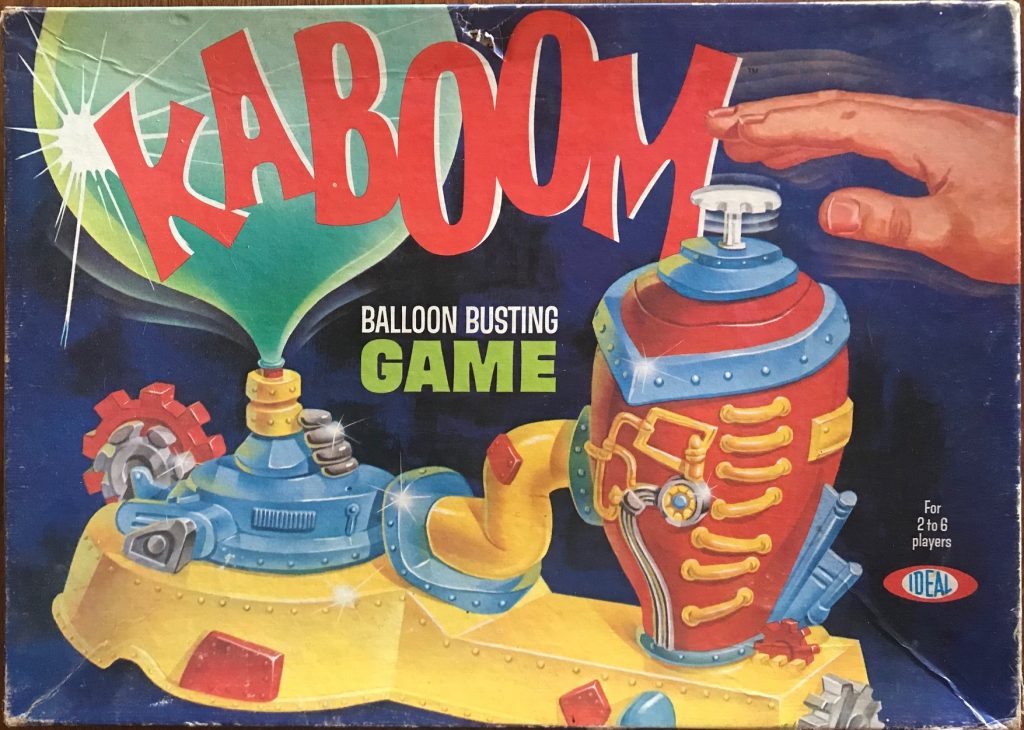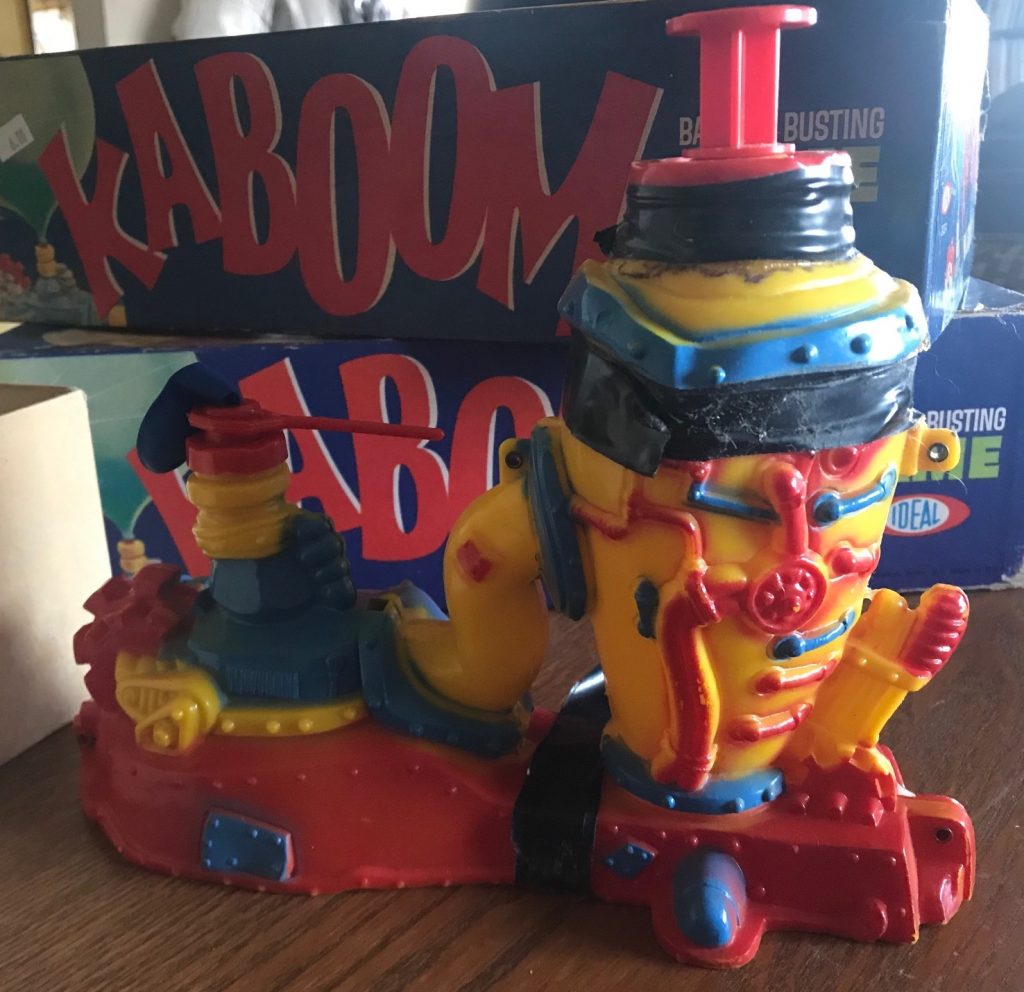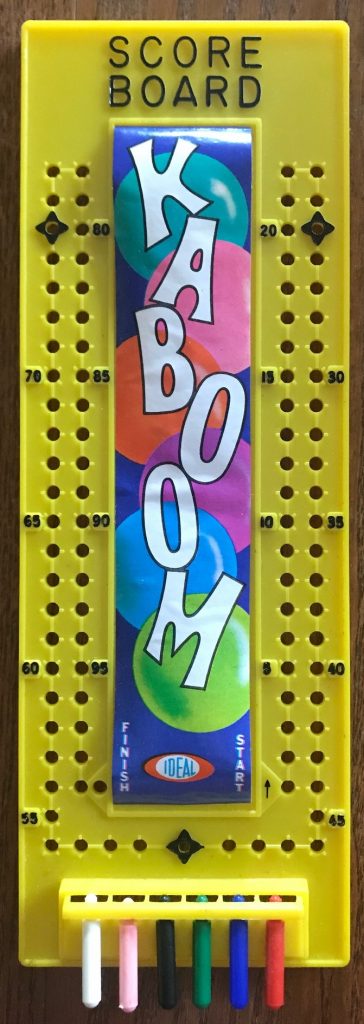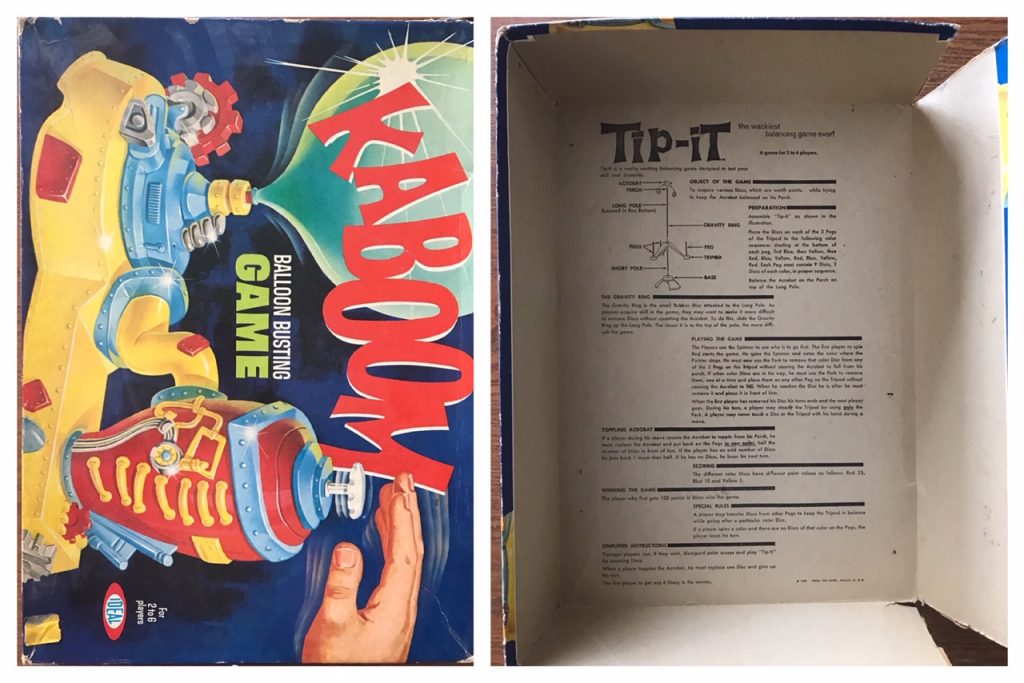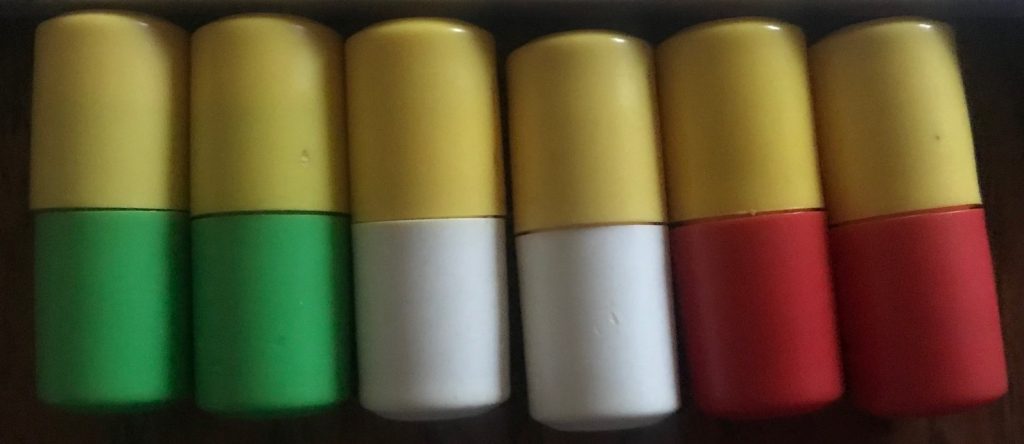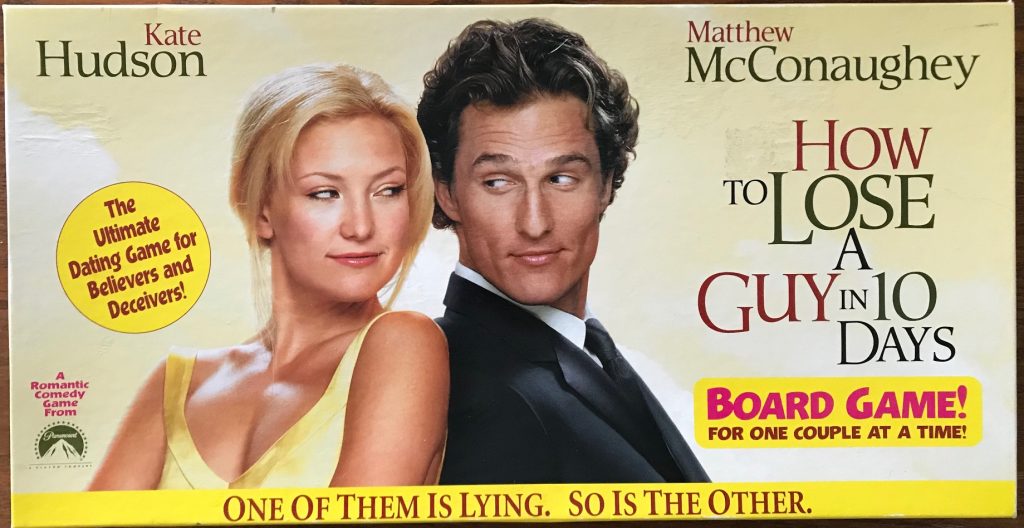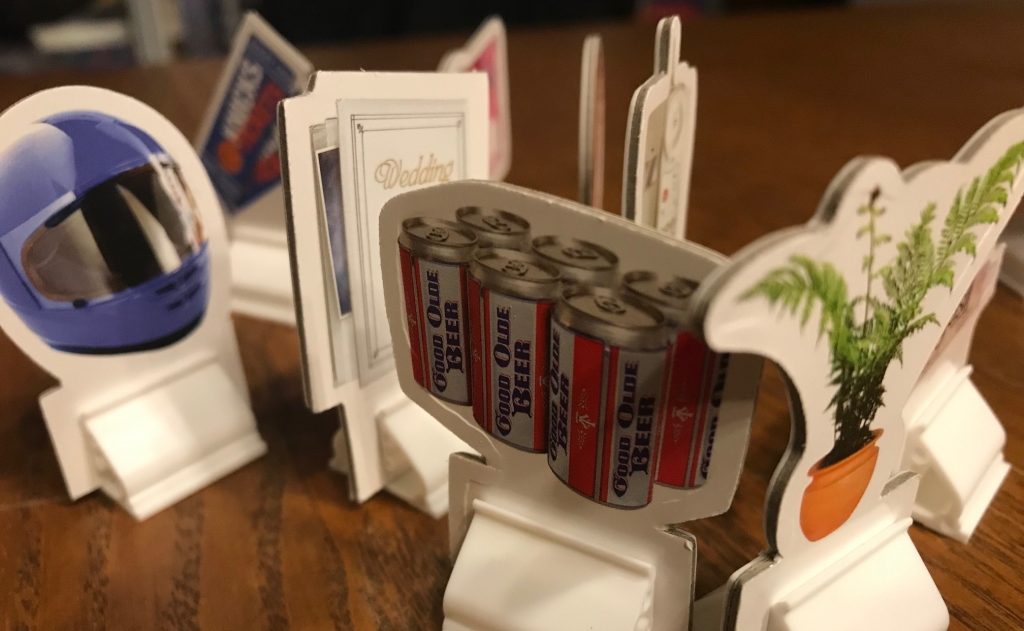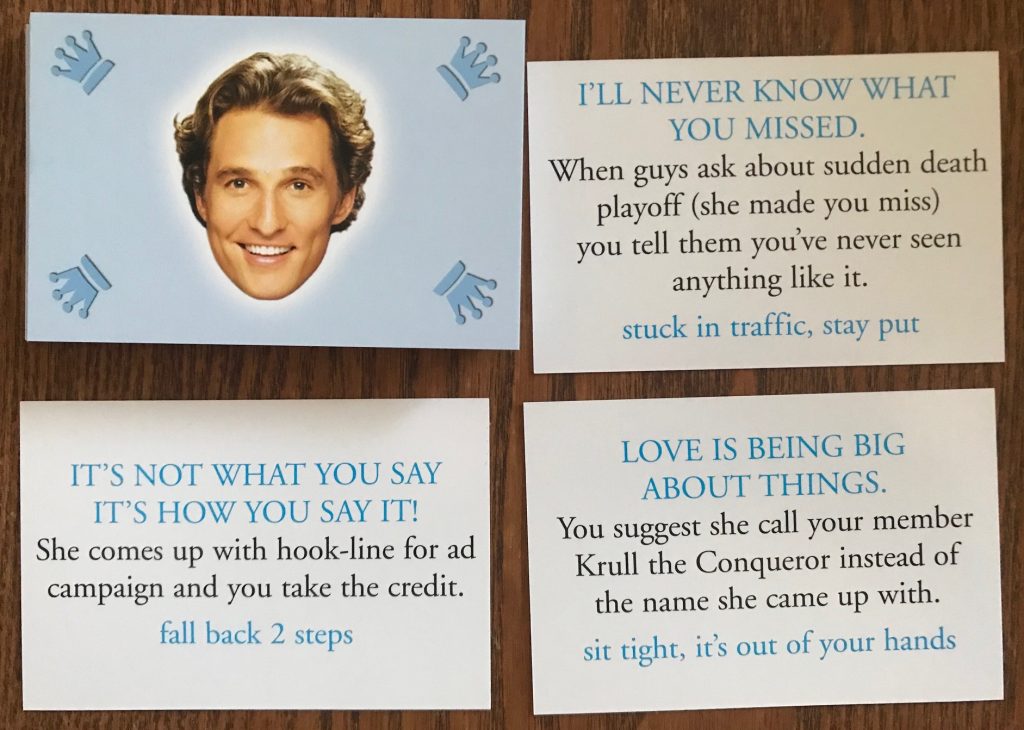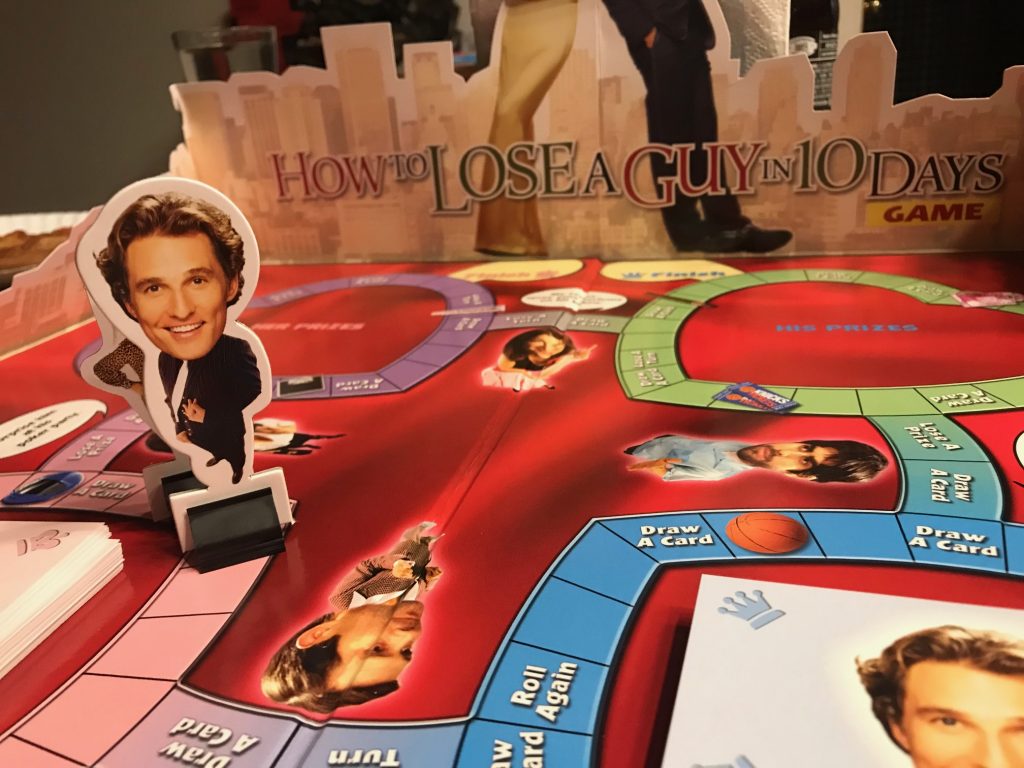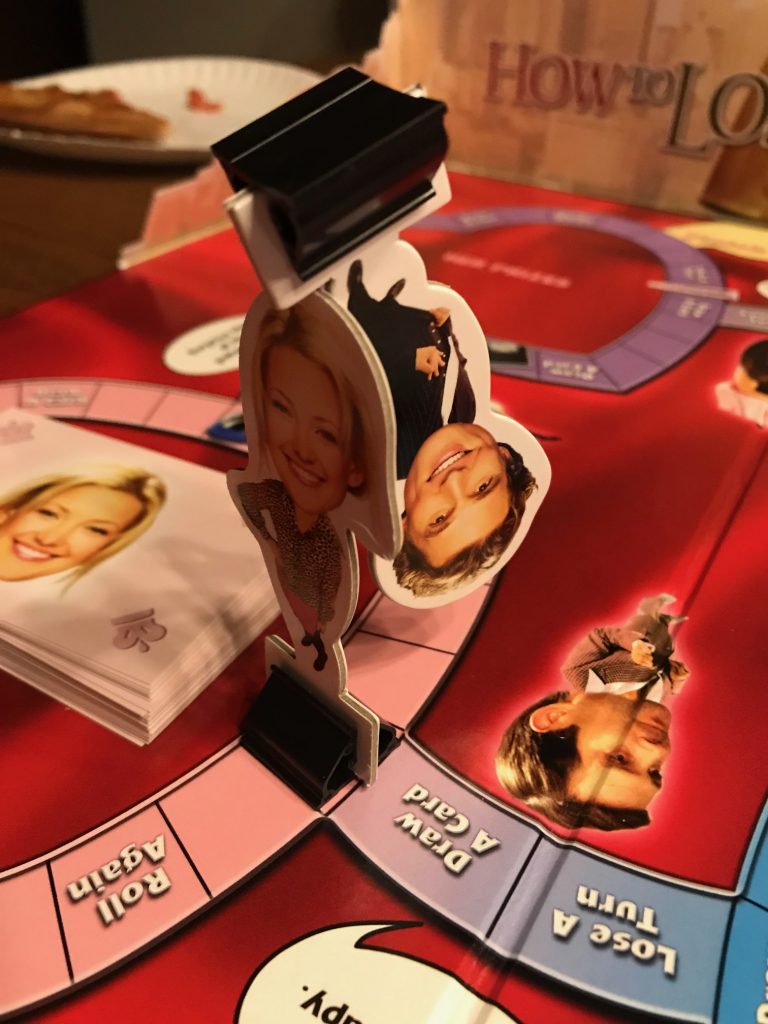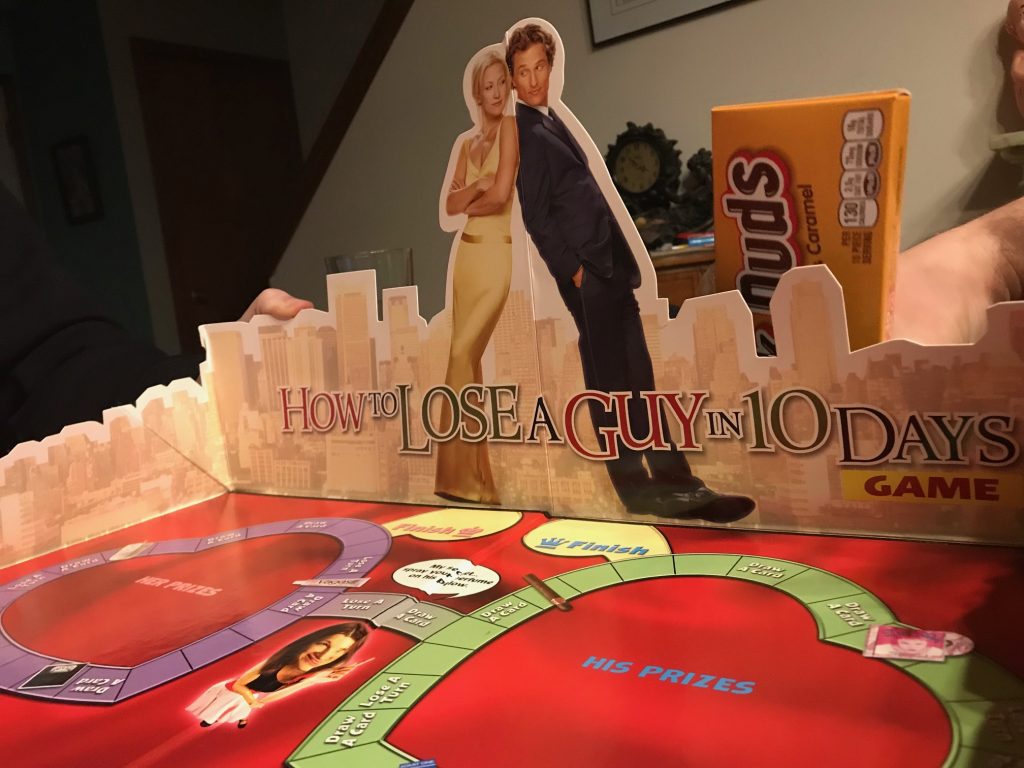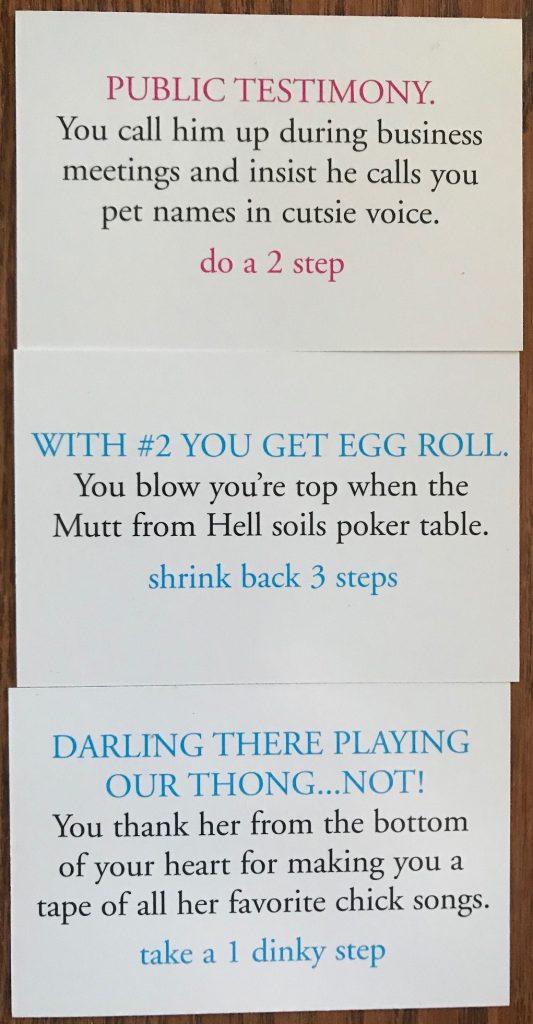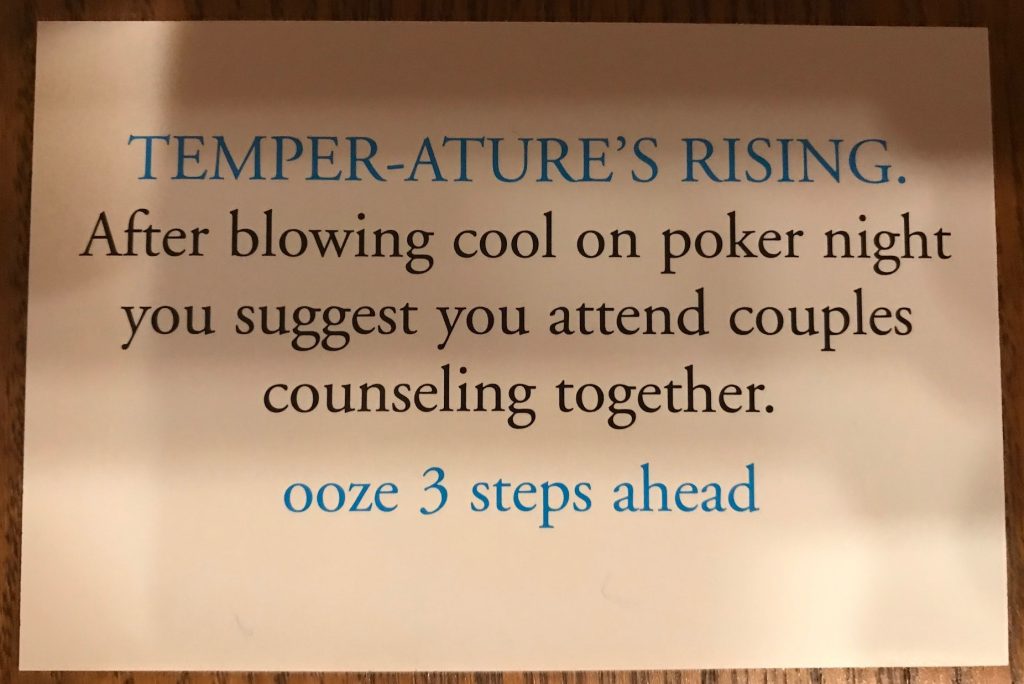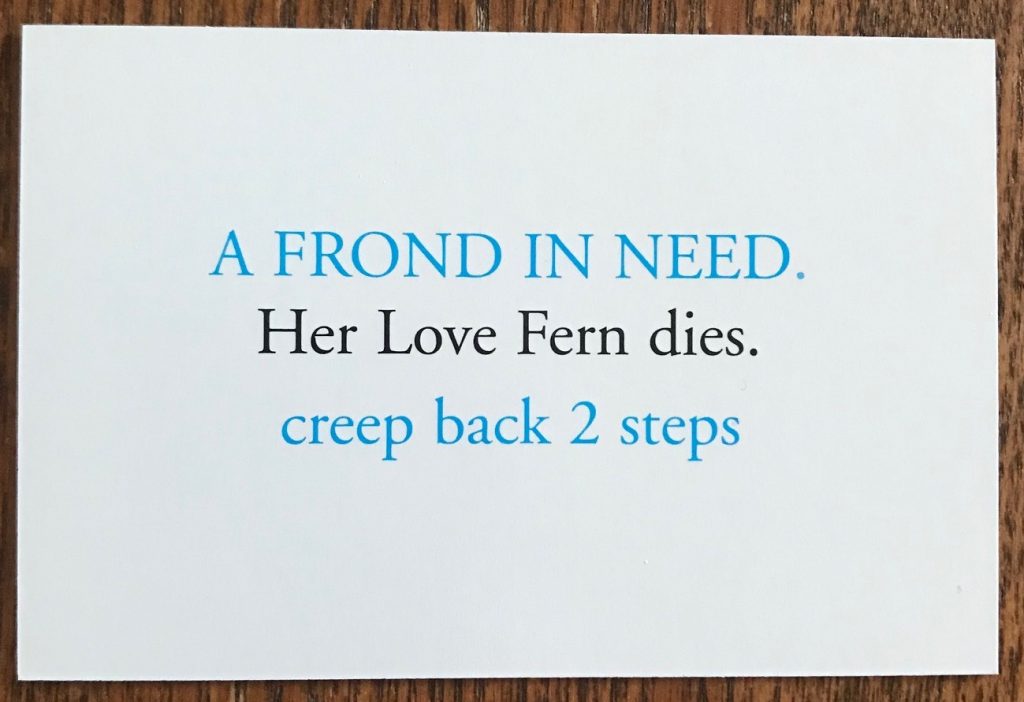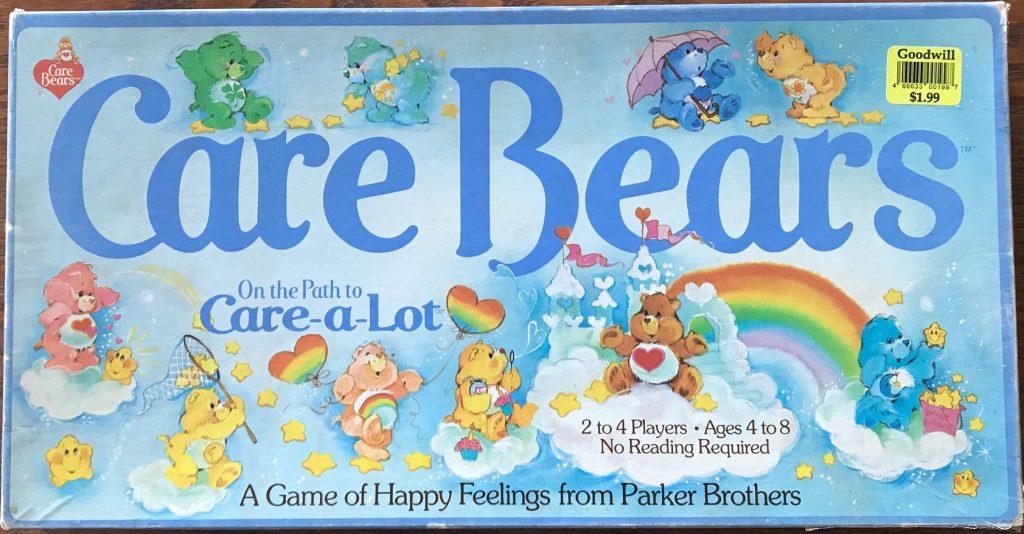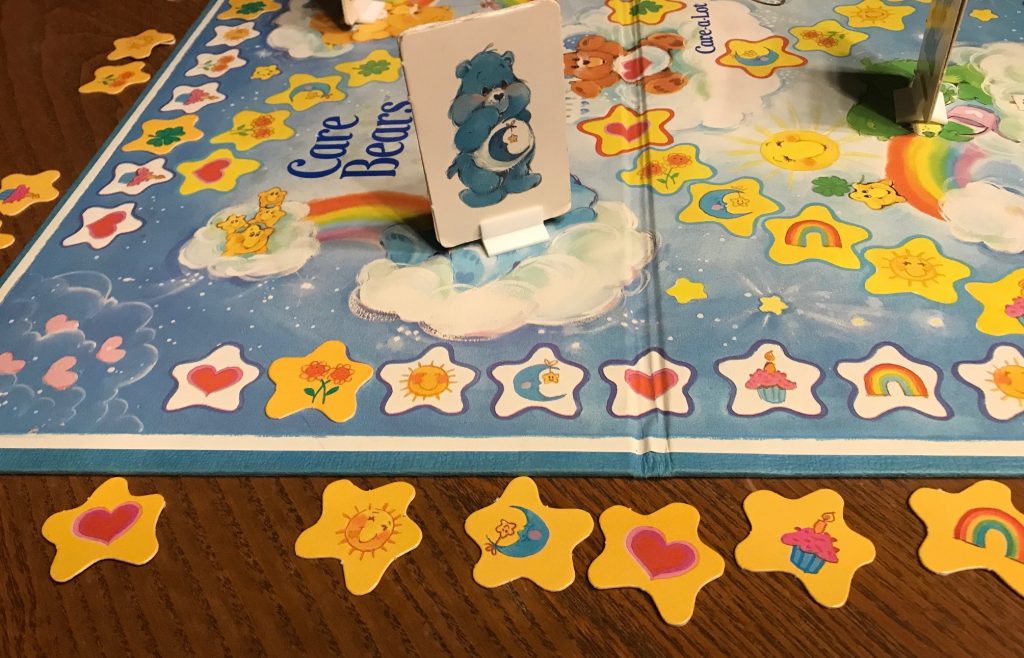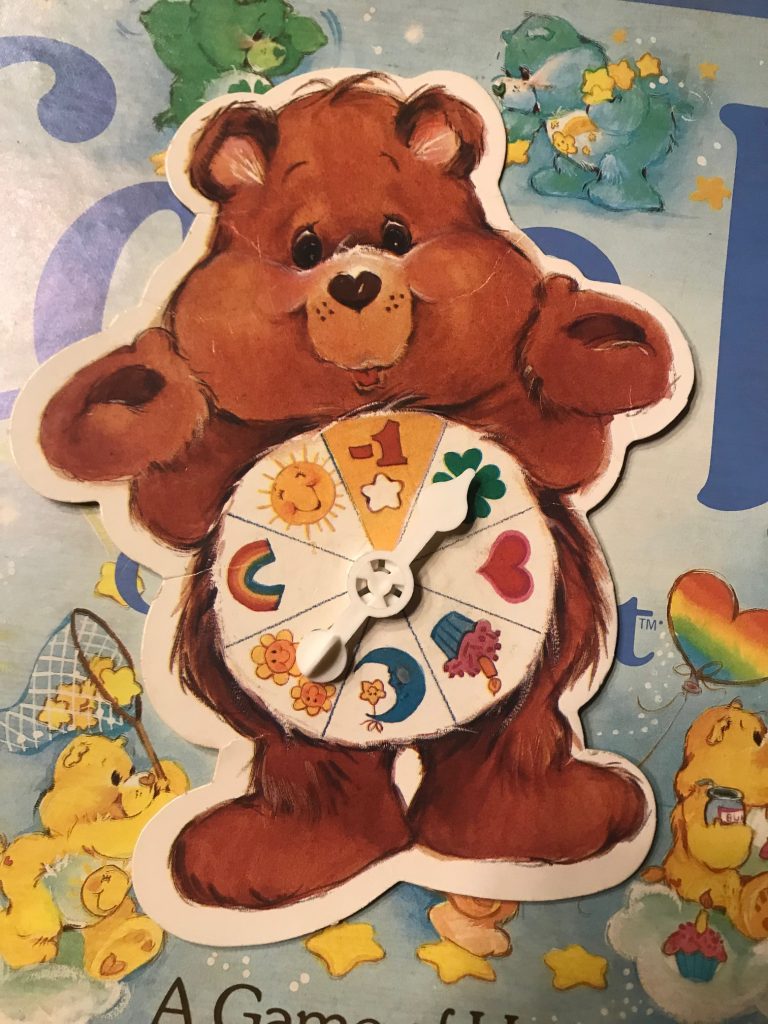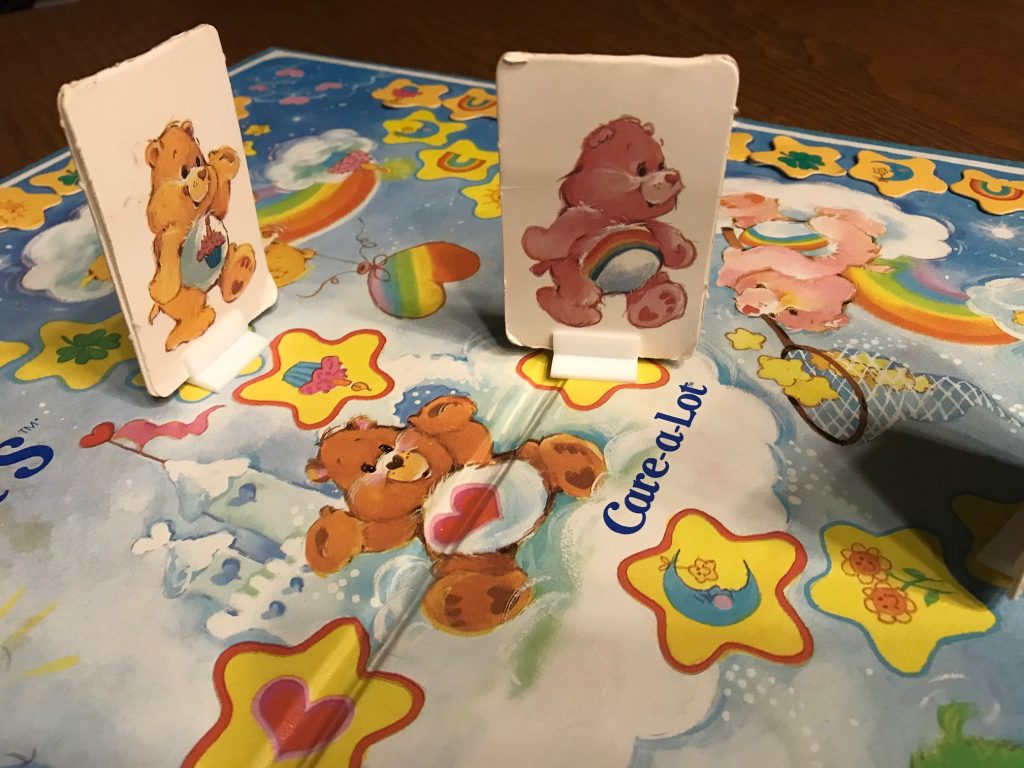Review: Figure It Out
Publisher: Cardinal
Year: 1998
Tagline: The Game
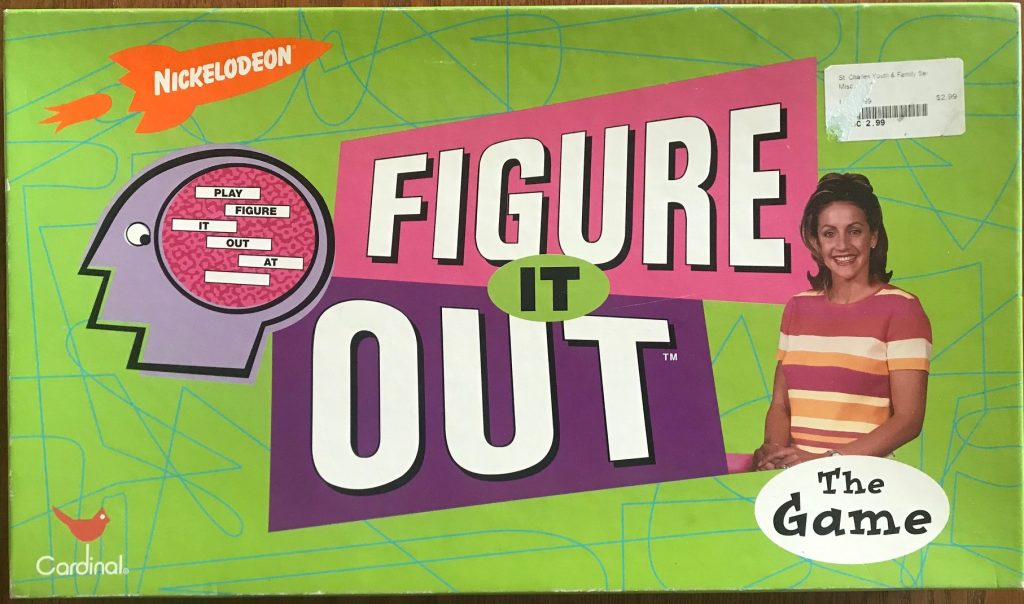
how we met
I found Figure It Out at the same stop where I picked up Scavenger Hunt, so you can read more details there if you like. The gist is that it was a stop I’d never made before, and one that paid off because people with my interests in games don’t seem to visit that shop often.
I had never seen (frankly, had never heard of) Figure It Out as a show, but I know old Nickelodeon games can fetch a couple of bucks in resale and are likely to meet my expectations in levels of cheesiness.
how it plays
If you are familiar with the television show Figure It Out, then you will be familiar with how the game plays as it is exactly the same. For those unfamiliar, here’s how it works.
One player acts as the contestant and draws an ANSWER CARD, which will include four things on it: first, the answer which is the contestant’s talent or skill that the other players are trying to guess, second, clues about the answer that can be read at different times during play, third, a secret slime action, and finally a consequence if a player does the secret slime action.
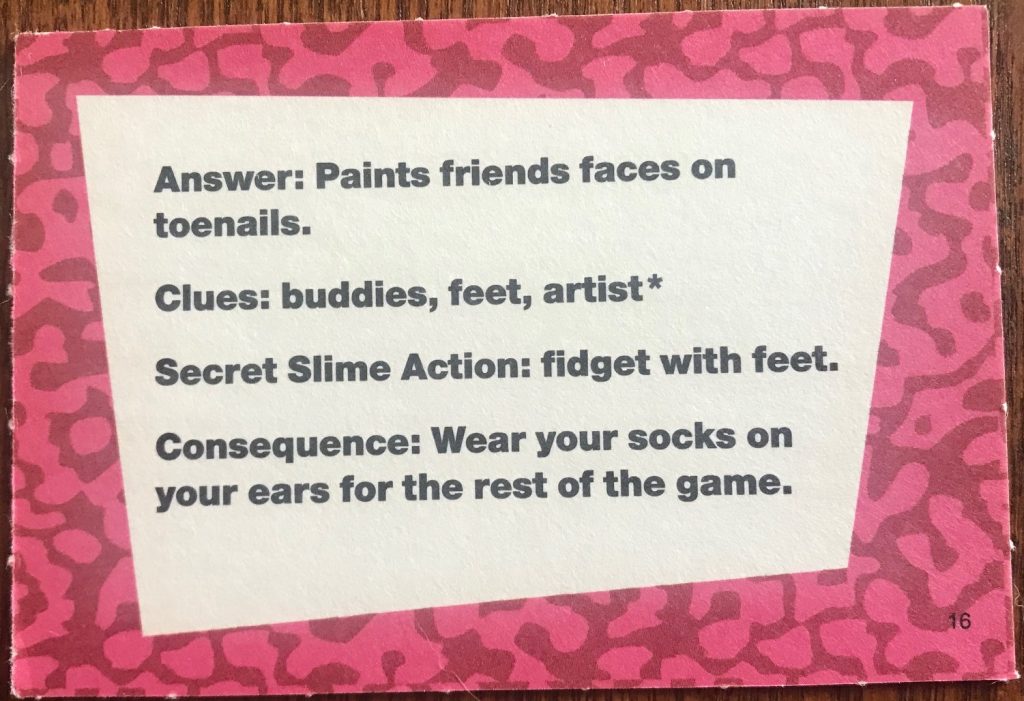
The contestant should set up the BILLY THE ANSWER HEAD so that other players know how many words they are guessing. The instructions also say to write in any of the words in parentheses. I looked through the ANSWER CARDs and there are no words in parentheses, so use your best judgment here. I think the spirit of the rule is to add words like “to” or “with” or “of.”
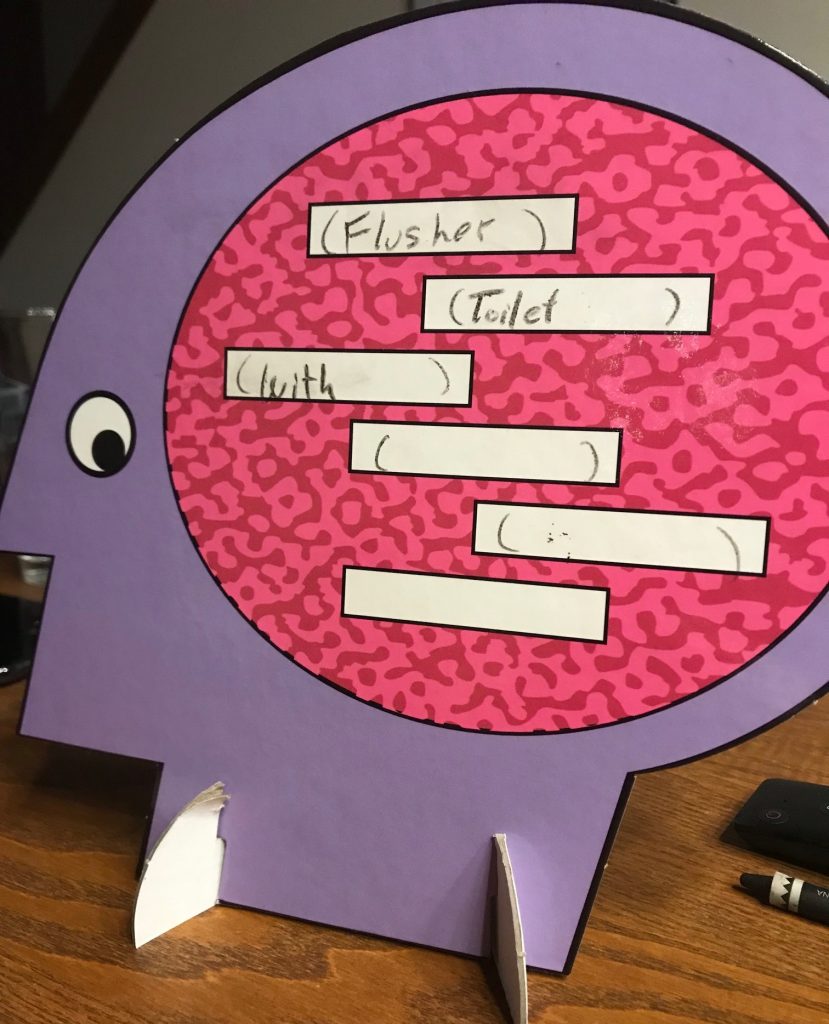
The goal is for the players to guess what is on the ANSWER CARD of the contestant.
The game is played in 3 rounds:
Round 1: Start the timer. Players take turns asking “yes” or “no” questions to try and deduce the statement. If a player gets a “yes” answer they may continue with their questions until they get a “no” answer. If someone guesses a word from the ANSWER CARD, stop the timer and write the word in the correct space on BILLY THE ANSWER HEAD. If players do not get the correct answer in Round 1, the contestant gets to draw a prize from the 1st Round Prize cards!
Round 2: The contestant reads the first clue. Then play continues just as it did in Round 1, except the contestant gets to draw a prize from the 2nd Round Prize cards if their answer is not guessed!
Round 3: The contestant reads the second clue. Then play continues as above. If players still are not able to guess the right answer, they get one last chance in a charade round. Start the timer and act out the final clue. All players may guess the answer. If time runs out without the correct answer, the contestant gets to draw from the grand prize deck!
So ultimately you run the timer four times before calling it, and that is roughly four minutes.
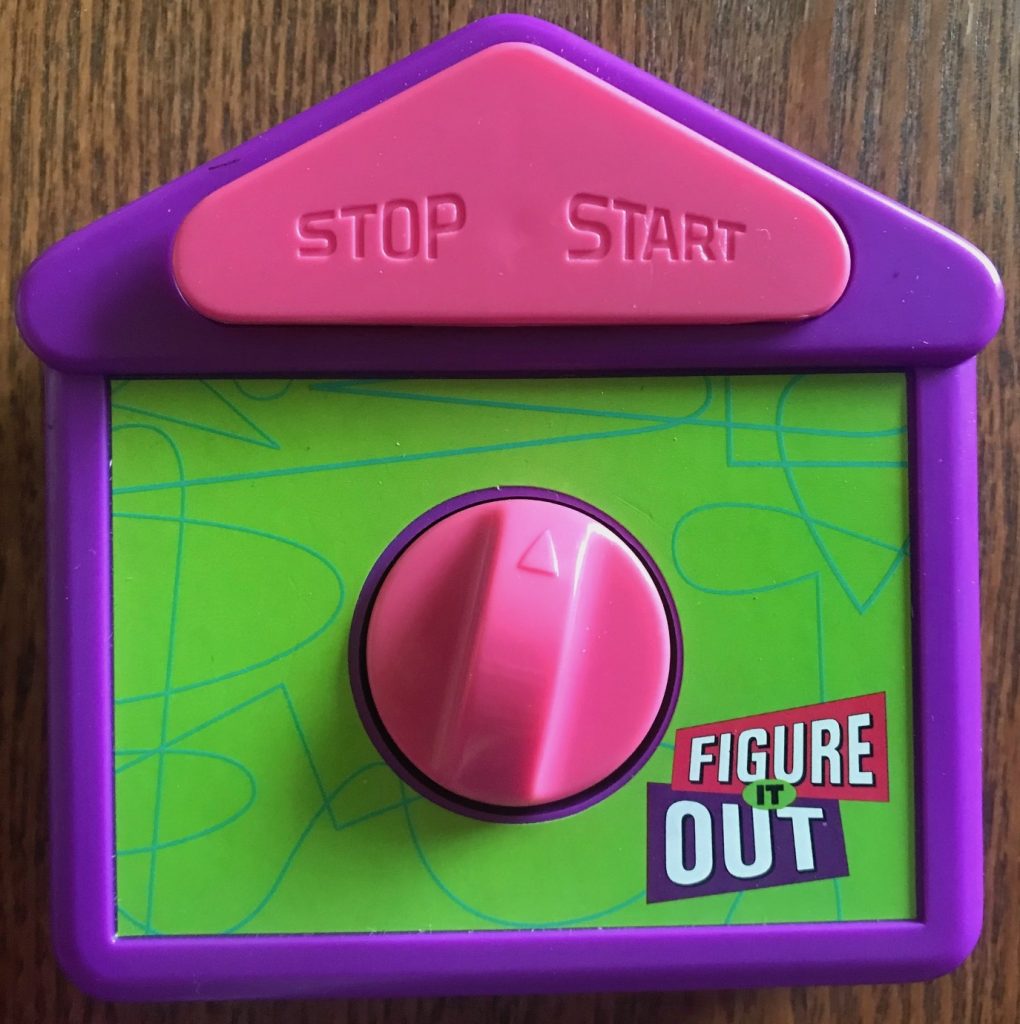
If at any point a player does the secret slime action, stop the timer and explain the consequences that they must follow.
Then the next player gets to be the contestant and repeat the rounds. Then the next player! Then the next player! And everyone wins!
how it went
I watched an episode of Figure It Out on youtube as part of my relentless research on your behalf. The show is just like the gameplay described above, except at the end of each contestant’s turn (all the rounds) they get an opportunity to show off their special skill. This is generally awkward, both because kids are awkward and because the game sometimes showcases things that aren’t really skills.
In the show, if one of the panelists (which generally consist of known stars from other Nickelodeon properties) does the secret slime action then they get slimed.
One of the things I found funny in the episode I watched was that the Round 1 prizes mostly consisted of pieces of the set from other Nickelodeon shows. One boy won a piece from the original Legends of the Hidden Temple set, and a girl won a speed bump from Global GUTS. At least in the board game the kids can win useful things like a backpack or a basketball in Round 1.
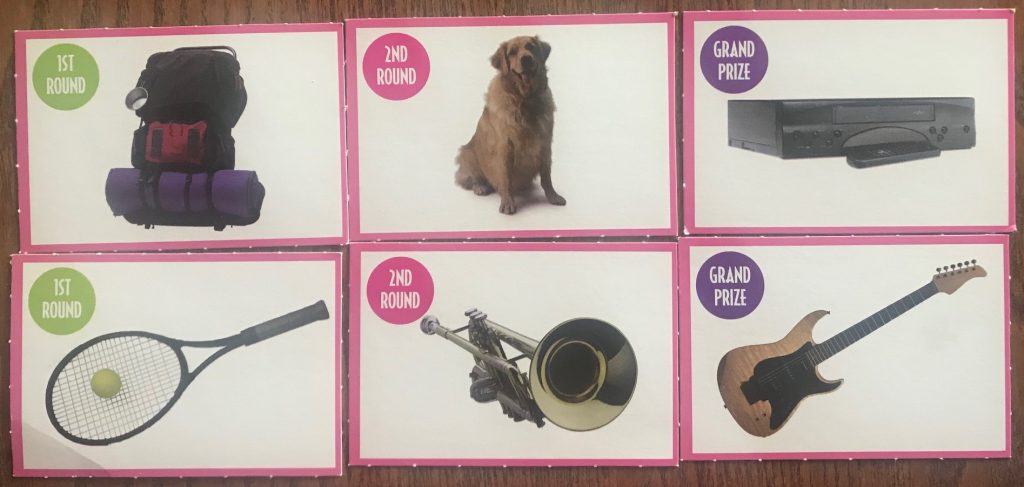
We played Figure It Out one evening with a host of other games. We were not able to successfully guess the talent in any of our rounds, probably because of an unfamiliarity with the show. We were not prepared to think as quickly as you need to. The timer is just one minute, so you really need to be ready with a host of “yes” or “no” questions to be able to make progress.

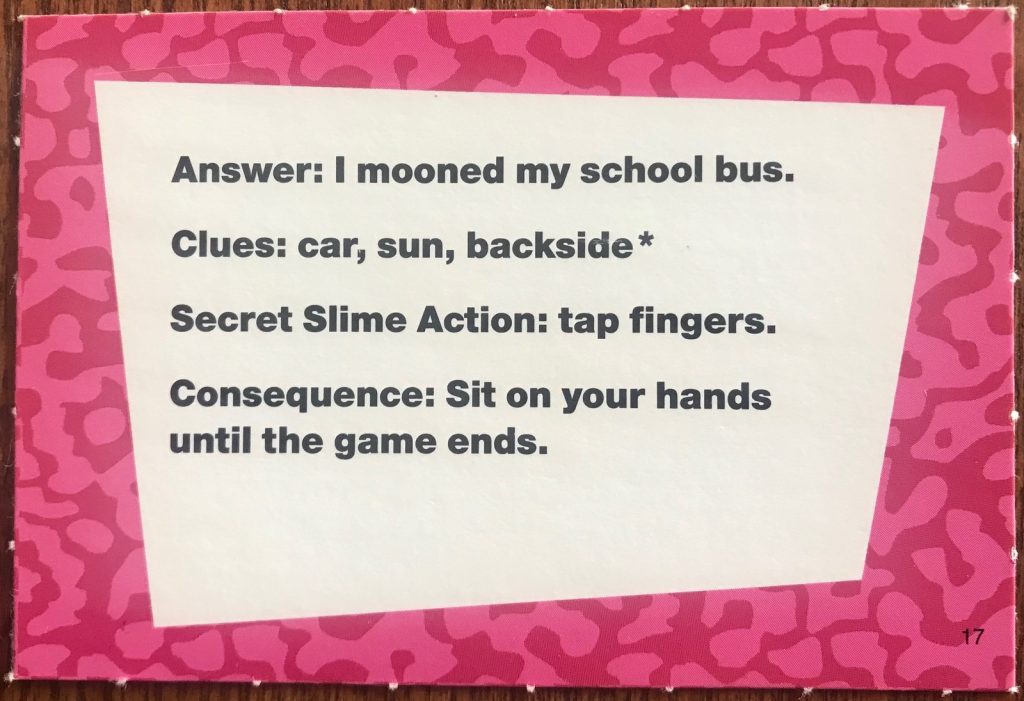
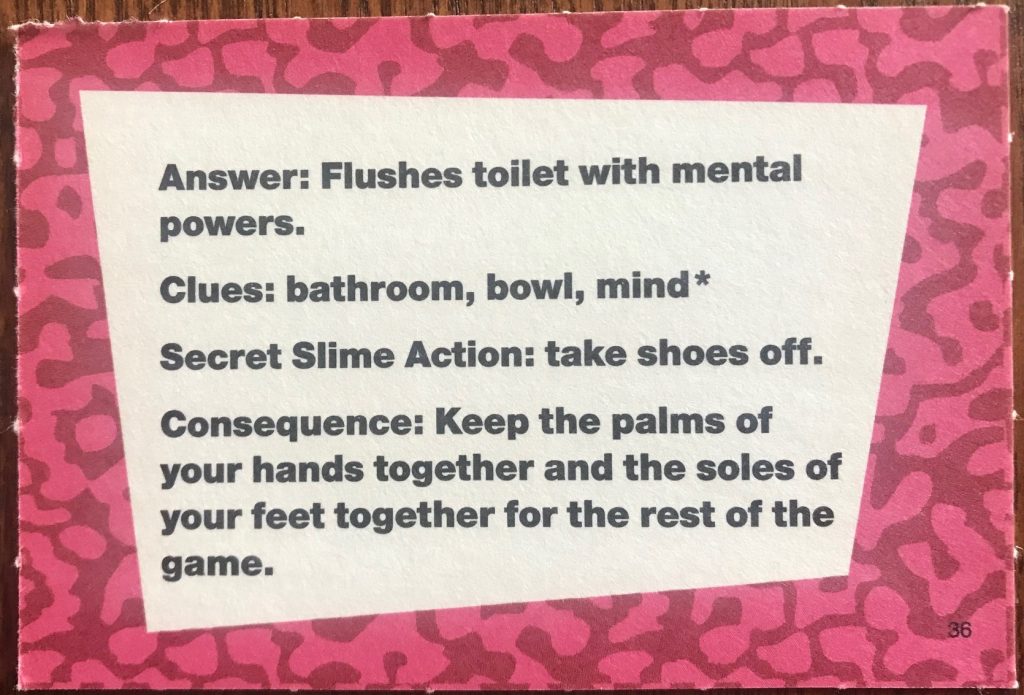
Our game group is all about the same age, and we are all a bit too old to have seen Figure It Out, which probably dampened appreciation for the board game. However, I am not sure that replayability is great on this game regardless. The ANSWER CARDs are double-sided, so that will increase how many are seen and essentially ruin them for gameplay. And the humor of the cards just isn’t my thing. I like absurd humor, but these are just dumb.
play or pass
Pass. Figure It Out pretty much requires you to be familiar with the television show in order to play the game well and appreciate it. If you take strictly what is in the box without this prior knowledge, the game is playable but silly. But not like good silly fun. More like, this is silly and I don’t want it anymore.
